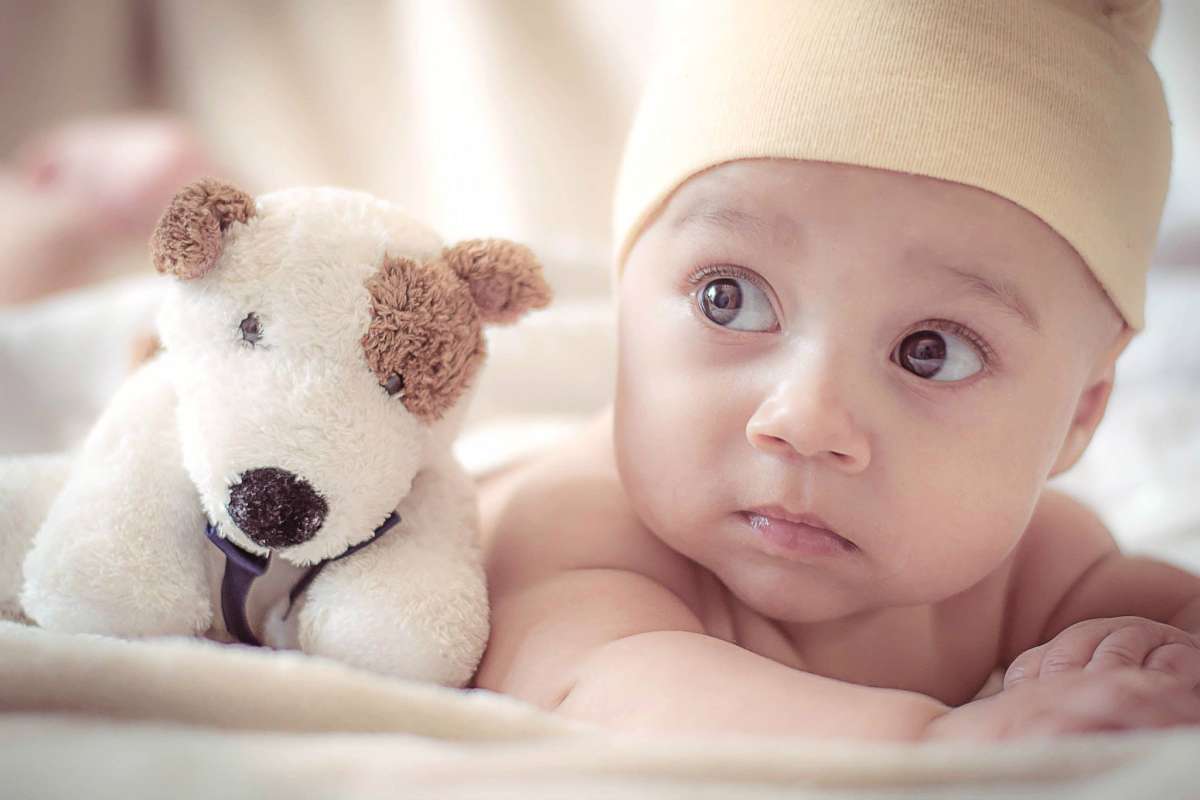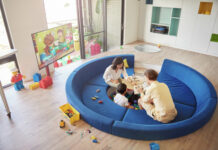Every parent faces the delightful challenge of deciding when to introduce stuffed animals into their child’s life. These soft, squishy companions can provide comfort, spark imagination, and even become cherished keepsakes. But the question remains: when is the right time to introduce a stuffed animal to your little one?
Kids should get their first stuffed animal between the ages of 6 months to 1 year. At this age, they can safely interact with plush toys, which can offer comfort and become their first “friend.” If you’re looking for a stuffed friend for your toddler, check out Hazel & Fawn.
Timing is Everything
Choosing the right age to introduce a stuffed animal to your child is crucial for their safety and enjoyment. Each developmental stage has its own considerations, from safety concerns to the ability to form attachments and engage in imaginative play. Understanding these stages can help you make an informed decision about when to bring a stuffed animal into your child’s life.
Infants (0-6 Months)
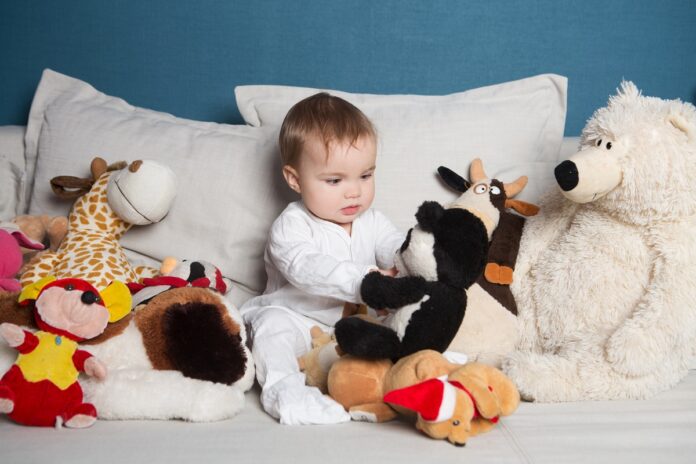
While infants might enjoy the sight and feel of a stuffed animal, it’s best to avoid giving them plush toys until they are at least 6 months old. At this stage, they are developing their motor skills and starting to explore the world around them, but they still require constant supervision. Infants often put objects in their mouths, so it’s important to avoid any toys that could pose a choking hazard.
Instead, focus on interactive activities that involve supervised sensory exploration. For now, simple rattles and soft fabric books can be more appropriate and safe for their developmental needs.
Toddlers (6-12 Months)
Around 6 months, babies begin to sit up, grasp objects, and interact more with their surroundings. This is an ideal time to introduce a small, soft stuffed animal. Ensure that the toy is safe, with no small parts or choking hazards. This early introduction can help foster a sense of security and companionship.
At this age, children start to form attachments and may begin to seek comfort from their new plush friend. The tactile experience of hugging and cuddling a stuffed animal can also be soothing, helping to calm them during nap times or moments of distress. Choose a toy that is machine washable to maintain hygiene and cleanliness easily.
Early Childhood (1-3 Years)
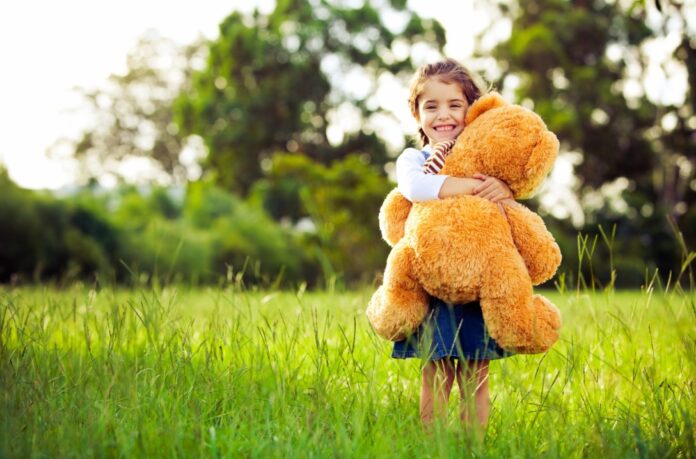
Between the ages of 1 and 3, children become more mobile and independent. They start to engage in imaginative play and form attachments to their toys. At this stage, a stuffed animal can become a beloved friend, offering comfort and companionship. Choose a toy that is durable, easy to clean, and appropriately sized for your child.
Children in this age group often carry their favorite toys everywhere, so it’s important to select one that can withstand rough handling and frequent washing. The stuffed animal can also play a role in social development, as children may use it in role-playing scenarios, helping to develop their communication and empathy skills. As they grow, the stuffed animal can become a trusted confidant, making transitions like starting preschool easier.
How to Choose the Right Stuffed Animal
When selecting a stuffed animal for your child, it’s important to choose one that is age-appropriate.
For infants and toddlers, opt for toys that are soft, lightweight, and free of small parts that could pose a choking hazard. Look for toys that are labeled as safe for your child’s age group. It’s also beneficial to choose stuffed animals with simple, embroidered features instead of plastic eyes or buttons, which could become loose and hazardous.
Additionally, consider the size of the stuffed animal; smaller toys are easier for young children to handle and carry around. Ensuring the toy is suitable for your child’s developmental stage will maximize both safety and enjoyment.
Quality and Durability
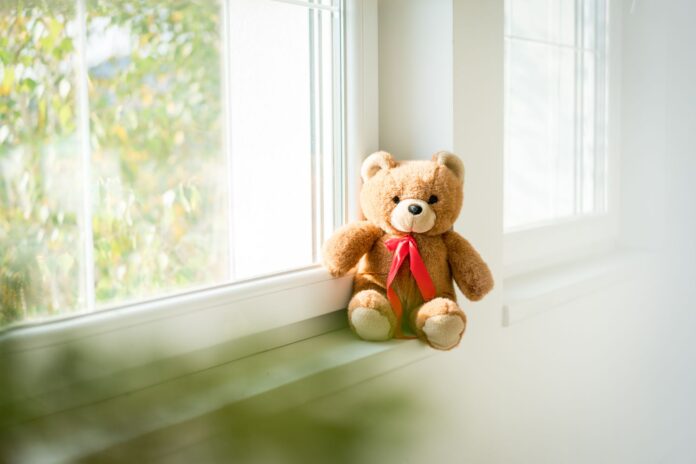
Select stuffed animals made from high-quality materials that can withstand lots of cuddles and playtime. Ensure that the seams are strong and that there are no loose parts. This will help prevent the toy from falling apart and becoming a potential safety risk. High-quality materials also tend to be more resilient, maintaining their softness and shape even after repeated use and washing.
Investing in a well-made stuffed animal can save money in the long run, as it will not need to be replaced frequently. Additionally, durable toys can become long-lasting keepsakes that hold sentimental value as your child grows.
Washability
Kids can be messy, and their toys often bear the brunt of spills and stains. Choose stuffed animals that are machine washable to ensure they stay clean and hygienic. Regular washing will help keep allergens at bay and maintain the toy’s appearance and texture. Easy-to-wash toys are especially important for children with allergies or asthma, as they can harbor dust mites and other allergens.
Look for toys with clear washing instructions to ensure they remain in good condition after cleaning. Keeping stuffed animals clean not only ensures your child’s health but also helps the toy remain a comforting and pleasant presence in their life.
The Benefits of Stuffed Animals

Stuffed animals offer a range of benefits that go beyond just being cute and cuddly companions.
They Provide Comfort and Security
Stuffed animals offer a sense of comfort and security to young children. These cuddly toys can become a constant in a child’s life, providing reassurance during bedtime or in unfamiliar situations. The tactile sensation of hugging a soft toy can be soothing, helping children feel safe and loved.
Emotional Development
These furry friends can play a crucial role in a child’s emotional development. They can help children express their feelings, practice empathy, and even develop a sense of responsibility. By caring for their stuffed animal, kids learn important social skills that they will carry into their interactions with others.
Imagination and Creativity
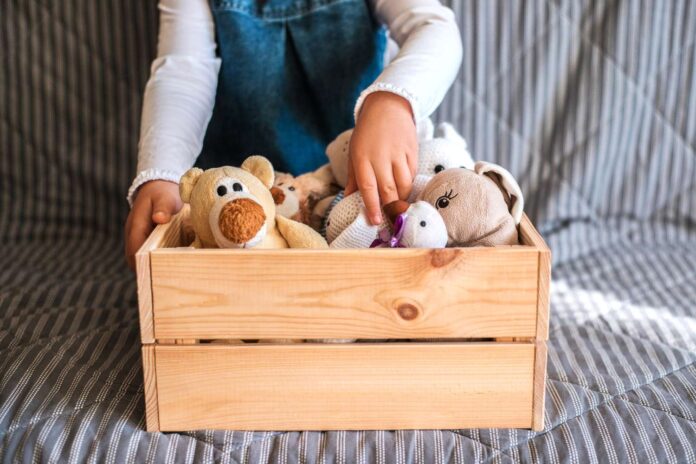
Stuffed animals are fantastic tools for nurturing a child’s imagination. They can become characters in a child’s imaginative play, taking on roles in stories and adventures. This kind of play is essential for cognitive development, as it encourages problem-solving, creativity, and storytelling skills.
The Perfect Cuddle Buddy
Introducing a stuffed animal to your child is a delightful milestone that offers numerous benefits, from comfort and security to emotional development and imaginative play. The ideal time to give your child their first stuffed animal is between 6 months to 1 year, ensuring that the toy is safe, age-appropriate, and high-quality.

